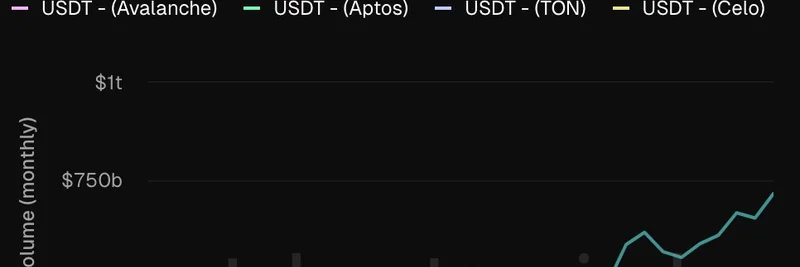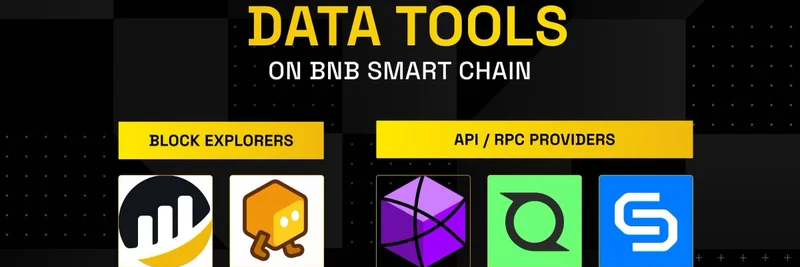If you've been keeping an eye on the crypto world, you know stablecoins like Tether's USDT are the backbone of trading, especially for volatile assets like meme tokens. A recent tweet from Token Terminal caught everyone's attention, highlighting some jaw-dropping numbers for USDT's onchain activity in July.
The post points out that USDT racked up a massive $1.24 trillion in onchain transfer volume last month. That's not just big—it's enormous, showing how integral USDT is to daily crypto movements. But the real surprise? Aptos has climbed the ranks to become the third-largest network for USDT transfers, right behind heavyweights Tron and Ethereum.
Looking at the chart shared in the tweet, you can see Tron's dominance with its teal line skyrocketing, especially in recent months. Ethereum holds steady in second, but Aptos—represented by that green line—has been on a tear, overtaking Solana, Avalanche, TON, and Celo. Onchain transfer volume here refers to the total value of USDT moved across these blockchains, not including exchanges' internal trades. It's a key metric for gauging real-world usage and liquidity.
For those new to this, USDT is a stablecoin pegged to the US dollar, issued by Tether. It's used everywhere in crypto for trading, remittances, and even as a store of value in volatile markets. Blockchains like Tron and Ethereum act as "transport layers," meaning they're the networks where USDT tokens are minted, transferred, and redeemed.
Breaking Down the Rise of Aptos
Aptos, a layer-1 blockchain known for its high throughput and low fees, has been gaining traction. Launched in 2022, it uses a unique consensus mechanism called AptosBFT, which allows for faster and more efficient transactions compared to some older chains. This makes it appealing for high-volume activities like stablecoin transfers.
Why the surge in USDT on Aptos? It could be tied to growing adoption in DeFi (decentralized finance) protocols and emerging ecosystems. For meme token enthusiasts, this is exciting because better stablecoin liquidity often paves the way for more trading pairs and lower slippage on DEXs (decentralized exchanges). If you're trading memes on Aptos-based platforms, having robust USDT support means quicker swaps and potentially bigger pumps.
Compare this to Tron, which has long been a go-to for cheap transfers, especially in regions with high remittance needs. Ethereum, despite higher fees, benefits from its massive ecosystem and security. Solana, once a darling for meme tokens, shows in purple on the chart but has flattened out, possibly due to network congestion issues in the past.
Implications for Meme Token Traders
Meme tokens thrive on hype, community, and easy accessibility. With USDT being the most widely used stablecoin for entering and exiting positions, shifts in its transport layers can influence where the next wave of meme activity happens.
Take Aptos: Its rise could signal a new hotspot for meme launches. Projects like Aptos-based meme tokens might see increased interest as traders seek lower fees and faster confirmations. Meanwhile, TON (The Open Network), shown in blue, and Celo in yellow, are still niche but growing—TON, in particular, has ties to Telegram, which could explode meme virality.
This data also underscores the overall health of the stablecoin market. With $1.24 trillion moved in just one month, it's clear crypto isn't slowing down. For blockchain practitioners, keeping tabs on these metrics helps in choosing where to build or invest next.
If you're diving into meme tokens, consider how stablecoin infrastructure like this supports the frenzy. Chains with strong USDT integration often host the wildest rides—think Solana's meme boom earlier this year.
Stay tuned to Meme Insider for more updates on how these trends shape the meme token landscape. What's your take on Aptos' ascent? Drop a comment below!



